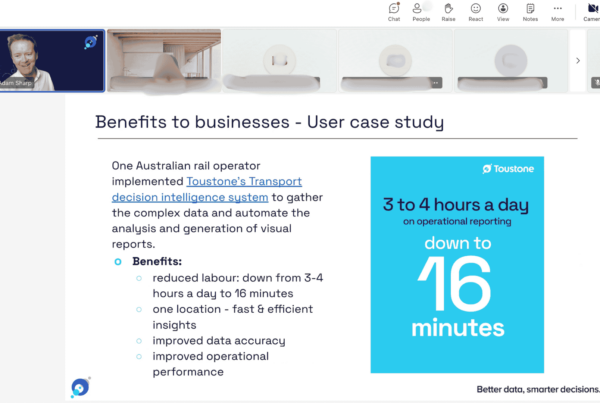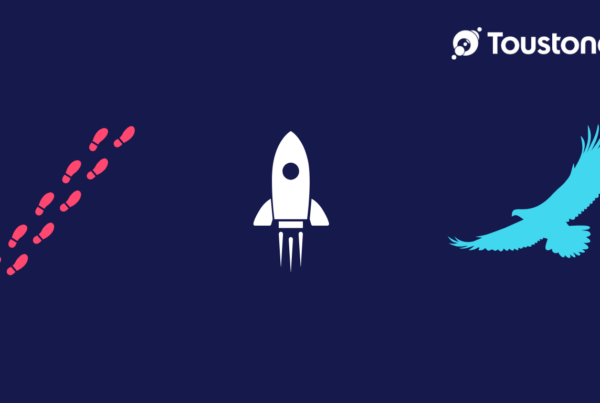Now more than ever, sustainability in rail is an important factor to the future operation of the industry and to achieving Australia’s net zero targets. To do this, understanding and minimising our energy consumption as an industry and individual operators is key. CSIRO research shared that two of the largest contributors to Australia’s greenhouse gases are energy production (of which we contribute to through use) adding to 32.6% of total emissions, and transport at 21% of emissions.
And the game changing step between understanding our energy use and then minimising it is: Predictive Analytics. But before we explain why we call it a game changer, let’s first discuss another reason why getting on top of our energy consumption is important, right now.
It has to do with costs: Costs of energy. And costs of carbon offsets.
We have all seen first hand the rising cost of energy, and there seems to be no change to this trend in sight.
The other thing though which is also increasing in costs is carbon credits. And this is important, for the more carbon footprint we have as an organisation, the more we will have to pay to offset that footprint.
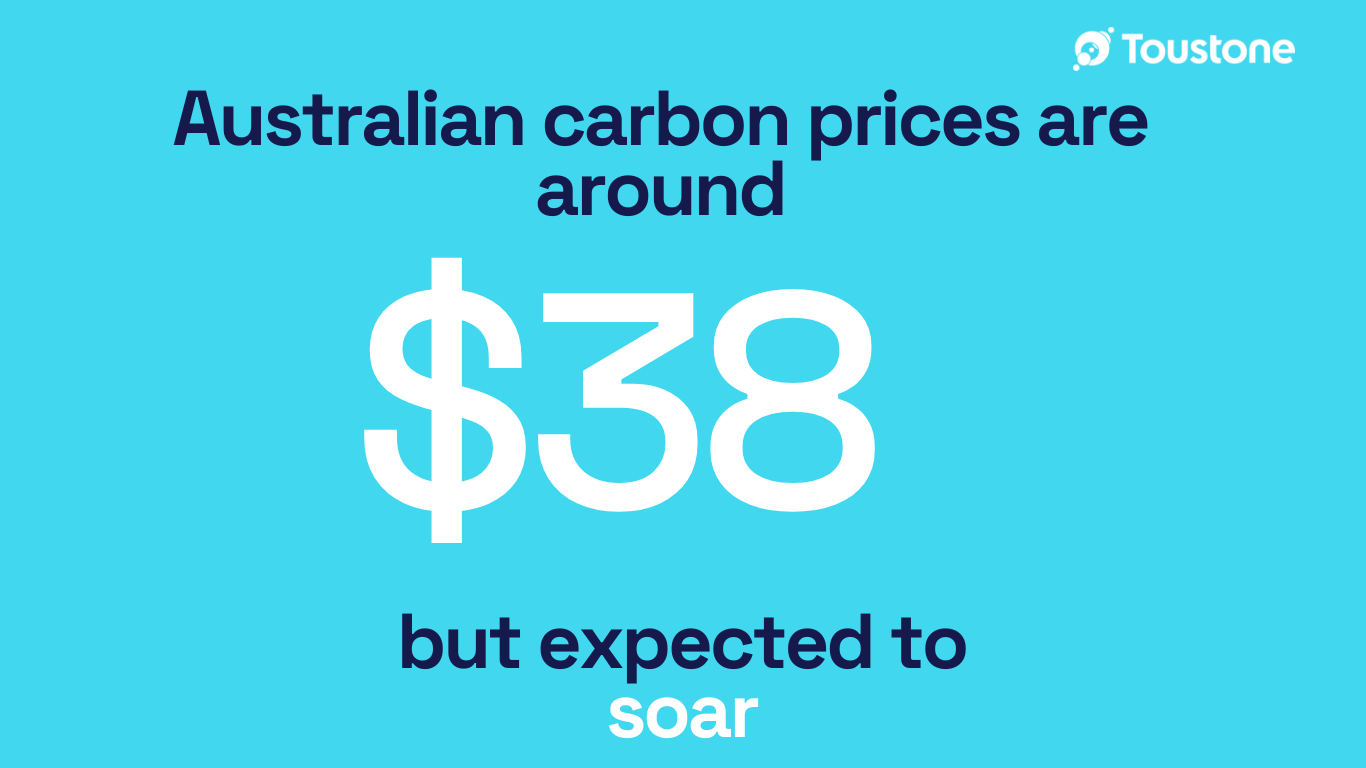
Over the last few years, we’ve seen carbon prices in Australia fluctuate from $25 to almost $60. Currently it is around the high 30s, but industry experts expect carbon prices to soar.
So yes, reducing our energy consumption, and therefore carbon footprint, not only helps us achieve our organisation’s sustainability goals, it will also help us reduce our operating costs right now, and into the future.
A priority for the Australian Rail Industry
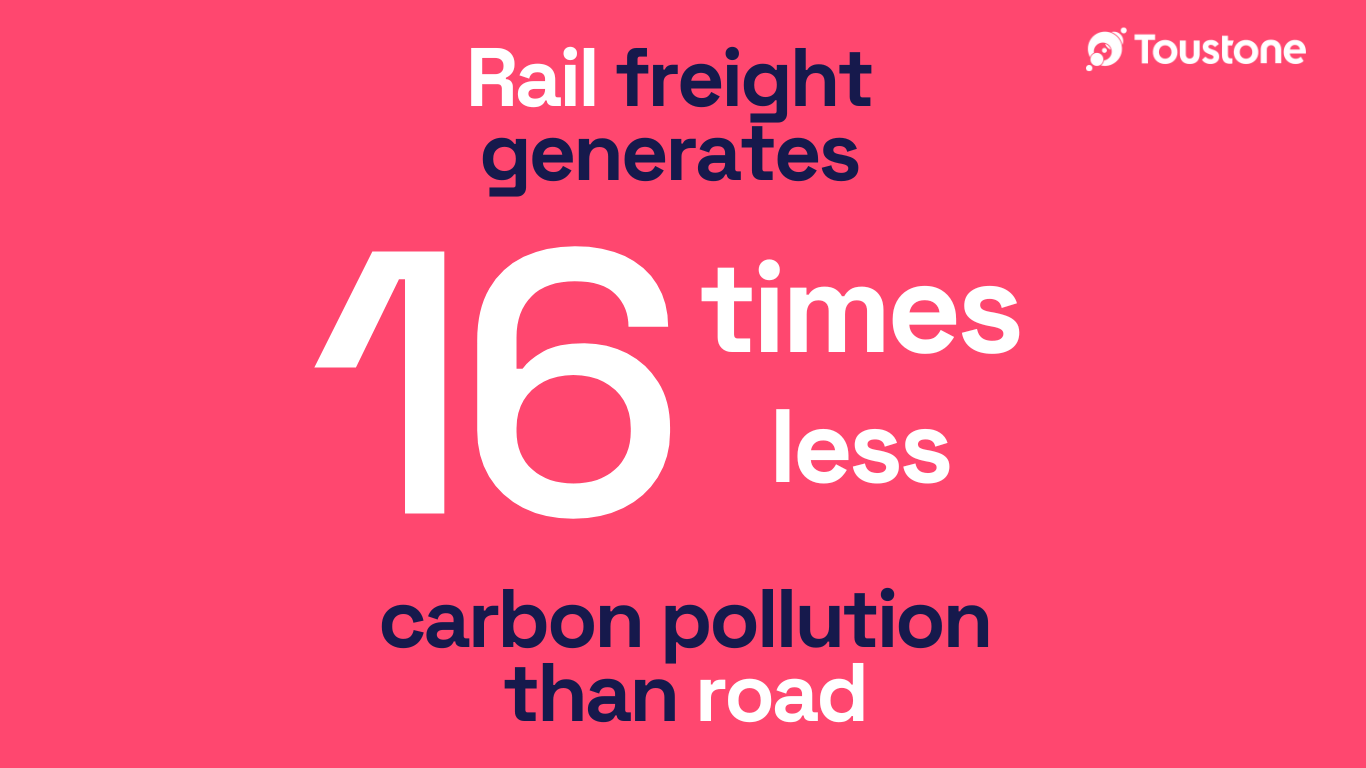
The rail industry specifically has a large role to play when it comes to sustainability.
Australasian Railway Association (ARA) research highlighted that the rail industry will help lead the decarbonisation of Australia and New Zealand’s transport networks with rail freight generating 16 times less carbon pollution than road, and just one commuter train taking 578 cars off the road.
In fact, if 20% more Australians use trains and trams instead of cars, it could bring about $1.2 billion in yearly benefits, including improved health from walking, less air pollution, reduced traffic jams and lower costs from fewer road accidents.
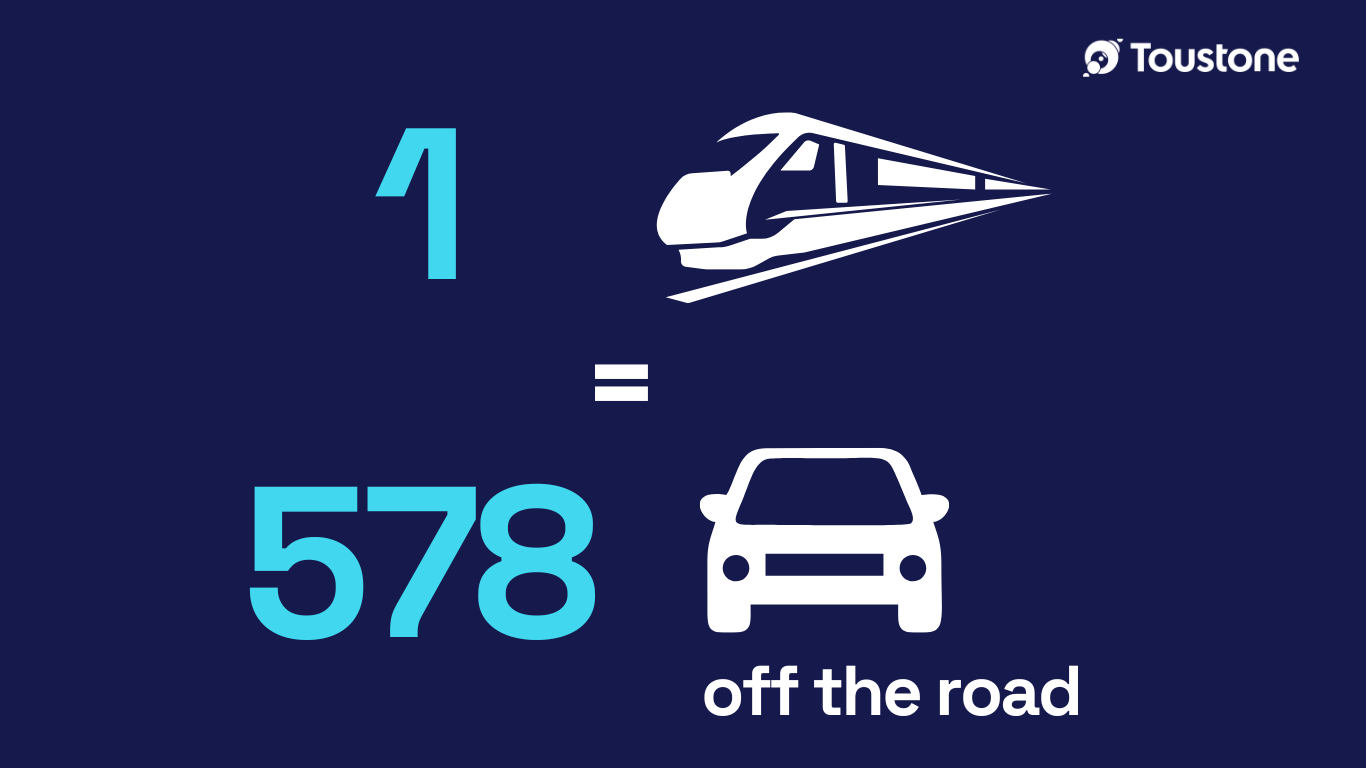
The ARA has also prioritised sustainability in the rail industry with their new sustainability guide, On Track to a Sustainable Future. This guide aims to give small to medium businesses in the rail industry an overview of different areas of sustainability, and highlights the ways ARA members could make the transport industry more sustainable.
As ARA members, Toustone provides comprehensive sustainability reporting and prediction to support organisations, particularly those in the transport industry, to be able to have the insights (both current and predictive) they need to be able to adopt more sustainable and cost-effective operations through the use of machine learning.
Predictive Analytics helps achieve sustainability goals and reduce costs
Toustone’s Sustainability Reporting and Predictive Analytics Solution, which uses machine learning, not only provides real-time energy consumption reporting, but also predictive sustainability energy analytics. In fact, it allows transport operators and governments to see up to 24 months in advance what their energy consumption and carbon footprint will be. Further still, users can test in real-time various scenarios or programs so you can see what their impact will be to your energy consumption and carbon footprint.
This means a transport operator can now use predictive insights to make data-driven decisions to help them meet their Environmental, Social, and Corporate Governance (ESG) strategy, sustainability goals when making investment decisions for alternative renewables.
Although the awareness of predictive analytics impact in the transport industry may be fairly new, it isn’t. Aayushi Vyas, Insights & Business Analyst within the Transport Analytics Team at Toustone recently shared,
“For some time now, Toustone has worked extensively with multiple transport owners and operators to help them understand and predict their energy use and carbon footprint, steering them closer to their goals. In fact, one of our Australian transport operator clients were able to make smarter and better investment decisions for alternative renewables; supporting cost savings and the ability to reduce consumption.”
Energy predictive analytics isn’t vapourware. It is a tried and tested tool being used right now by forward-thinking transport operators in Australia.
But how do you get started?
“It is a matter of drawing a line in the sand, and just starting”
The above is a quote often shared by our Co-Founder and Head of Transport Analytics and Service Delivery, Adam Sharp. He likes to use it to remind transport operators that these leading-edge tools, designed to help you achieve your business financial and sustainability goals, have layers to it. And to begin, it’s important to get on top of the most basic of requirements: Your data.
Some of the challenges we’ve observed transport organisations face when it comes to energy prediction is the lack of a clean database and bringing together thousands of data points into one place to try to understand an organisation’s actual consumption.
“This often ends up in hours spent on manual reporting, not to mention trying to navigate the contractual and legal requirements to forecast energy consumption. This then leads to a failure in accuracy and inefficient utilisation of resources.”
shared Aayushi.
This is what one of our Australian transport operator clients was facing. They needed an energy consumption prediction system with a minimal margin of error and high accuracy to meet contractual requirements.
To address this, Toustone developed an energy consumption prediction system leveraging machine learning which not only met standards but also achieved the accuracy threshold of above 90%.
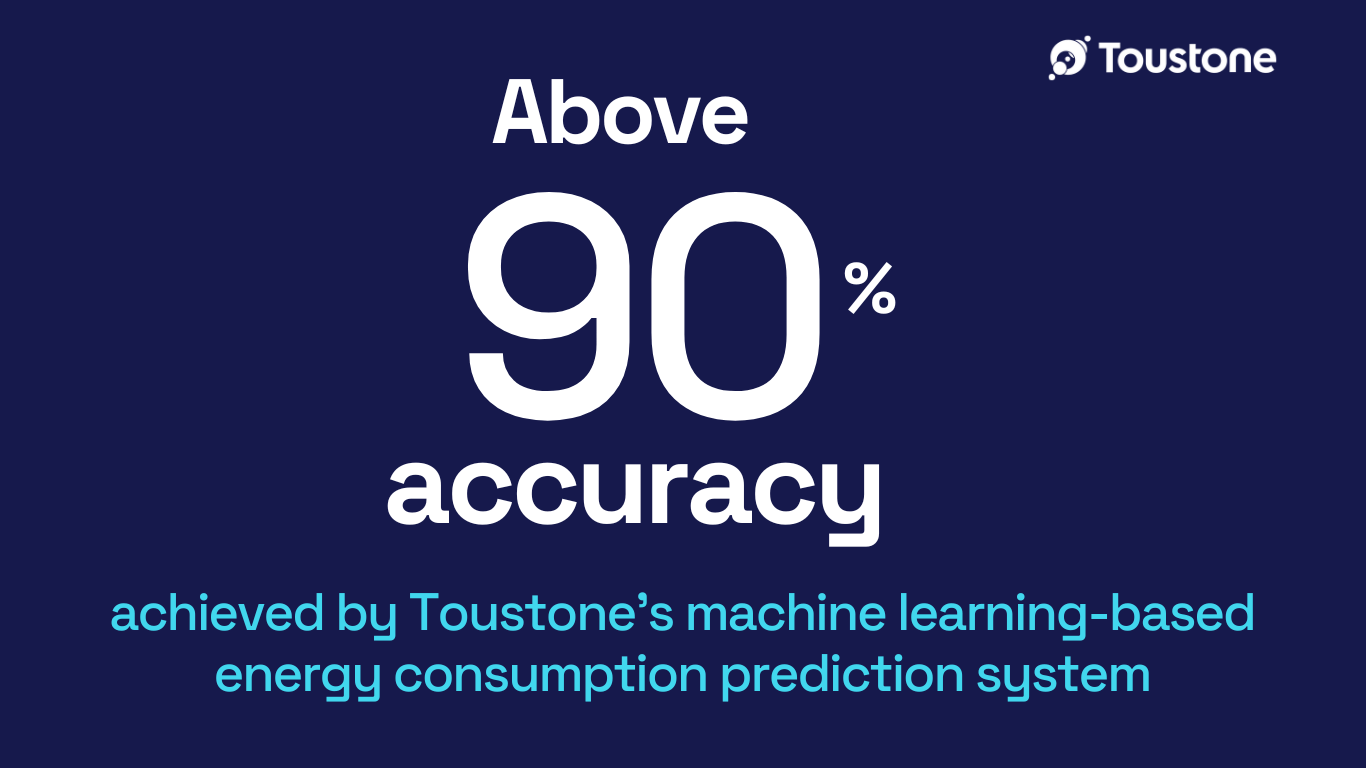
And beyond simple numbers, our platform allows our transport clients to:
- Predict the financial impact of their current and future energy consumption
- Identify which parts of the transport operation are using more energy and know they need to adjust areas to reduce their energy use
- Test various scenarios and access the predicted impact in reducing energy usage
- Review actual versus forecasted consumption to help with variance tracking
- Know which initiatives will have the greatest impact on their goals
- Gain a complete history of data so it avoids greenwashing
- Report with confidence to staff and stakeholders
- Head towards achieving their energy reduction and sustainability goals with confidence knowing they are backed by highly accurate predictions
- Convert energy consumption into carbon emissions, meaning it is reporting on carbon actuals and providing a prediction
From energy prediction to knowing your carbon emissions
Now that our transport client has the insights into current and future energy uses, they are one step closer to being able to calculate (and change) their carbon emissions, and also meet the looming Australian mandatory climate-related reporting requirements. But let’s park that topic for some other time.
At Toustone, we are lovers of data and are committed to helping organisations achieve their sustainability goals through the use of their data. If that’s what you are after, let’s chat.
Final Note: We appreciate that some may want to get a little deeper into the process of our predictive analytics (music to our ears as we love to talk tech), so we’ve included more detail below.
An automatic machine learning pipeline to maintain high accuracy
Toustone’s Solution is developed in four main stages as reflected in the below chart. These four stages include:
- Data Collection
- Data Analysis
- Data Modelling for Machine Learning
- Data Visualisation
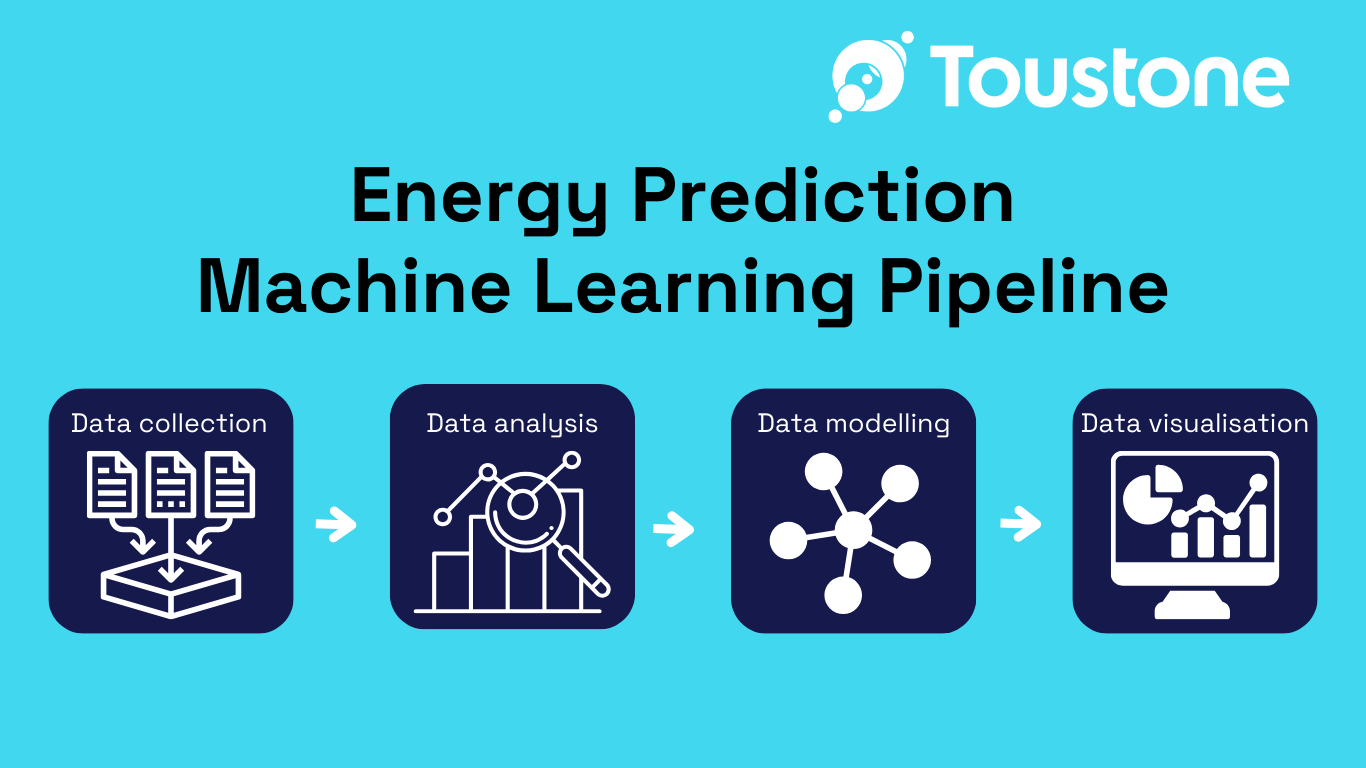
Once this reporting dashboard is created, this product is a stand alone product. You don’t have to do anything once it is built, such as worrying about keeping data updated. This is because the automatic machine learning pipeline re-trains itself to maintain the accuracy of the model and consistently gives high prediction results.
Models to suit individual businesses
The data modelling for machine learning is chosen based on the data available, types of data, data structures and types of predictive variables. We use a model that best suits an organisation’s data and take those predictive scores into visualisation.
In choosing the machine learning model, we work with each organisation to understand their data and tap into our extensive partner network’s expertise in ESG, climate change, and sustainability.
We do this by using advanced analytics to understand what challenges a business has so we can provide them with data-backed solutions and recommend machine learning pipelines that would cater to their business challenges.
This ensures that our solution not only addresses an organisation’s current needs, but also aligns with the future direction of sustainability reporting.
Get in touch with us to see how we can help your organisation achieve sustainable solutions.
